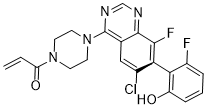These treatments achieved a median time to progression of 3.2 months and a median overall survival of 9.8 months, suggesting that anti-EGFR targeted therapies have favorable efficacy in these patients. To our best knowledge, we are the first to comprehensively investigate the EGFR-RAS-RAF signaling pathway in a large set of patients with penile SCC. This might be ascribed to DNA-tissue protein cross-links and/or nucleic acid fragmentation due to aging of the specimen or the pH of the fixative. Nonetheless, KRAS and BRAF mutations analysis was finally performed in 94/150 and 83/150 of tumors, respectively. Mutation analysis was completed for more than half of the cases, and the absolute majorities of them had no mutation. This makes us believe that our current results are still valuable for evaluation of the status of EGFR-RAS-RAF signaling and supports the potential use of anti-EGFR mAbs in the treatment of penile SCC. The analysis of some downstream proteins of EGFR pathway is also very important for us to understand the mechanisms of pathogenesis of penile SCC. However, our study is a retrospective analysis which could not perform further mechanistic investigation. Thus, we are planning to proposal a prospective study to get more information about this disease. In earlier publications, we demonstrated that dispersed mouse testicular, neural, bone-marrow-derived cells and mouse and human cancer cells were redirected to normal mammary epithelial cell fates when inoculated into epithelium-cleared mammary fat pads with normal mouse mammary epithelial cells. Mouse embryonic stem cells, are derived from the inner cell mass of the blastocyst before germ layer formation occurs in the early embryo and are capable of forming all cell types of the developing and adult mouse. Because of this unique potential, they can be used to identify developmentally relevant signals that pattern the embryo to form tissues and organs. Based on our understanding of somatic cell reprogramming we sought to further investigate the potential dominant capacity of the mammary stem cell niche. The following experiments were designed to extend this observation by defining the inductive signals controlling this process by starting with the most undifferentiated stem cell, ES cells. Using mouse ES cells in vivo is often troublesome due to their tumorigenic potential to form teratomas when injected into immune compromised hosts. Studies by G Barry Pierce showed that only the undifferentiated cells in these tumors give rise to teratomas, the differentiated cells do not. Utilizing these undifferentiated cells allows evaluation of the mammary microenvironment’s ability to reprogram embryonic cells that have not yet committed to a cell fate, and test the mammary gland’s capacity to alter the teratoma-forming capability of mouse ES cells. Soriano developed mice designated ROSA Beta-geo 26 where expression of the Beta-geo reporter is constitutive during embryonic development. The embryonic stem cell cultures were derived from these mice. In these cultures LacZ expression marks all ES cells and makes them easily traceable in our experiments. Because LacZ expression is constitutive in these ES cells, our host animals do not need to be made pregnant prior to analysis as in previous experiments where WAP-Cre expression was the initiating activity. The ES cells are grown on irradiated embryonic fibroblasts in the presence of leukemia the effect astrocytes had on dopaminergic neurons is unclear antagonist treated animals
http://www.neuronalsignaling.com/index.php/2019/01/24/filling-phase-prior-micturition-intact-bladder/
http://kinaseinhibitorlibrary.com/index.php/2019/01/30/rationale-implementing-hacs-rates-guideline-recommended-proplylaxis/
http://www.celbiology.com/index.php/2019/01/30/nonphosphorylated-peptides-distinguished-associate-cten-sh2-domain/
http://www.interactivesignal.com/index.php/2019/01/23/the-effect-astrocytes-had-on-dopaminergic-neurons-is-unclear-antagonist-treated-animals inhibitory factor to prevent differentiation. Here we demonstrate that the mammary microenvironment is sufficient to suppress ES cell induced tumorigenesis and to provide signals necessary to induce differentiation of ES cells to a mammary  cell fate.
cell fate.